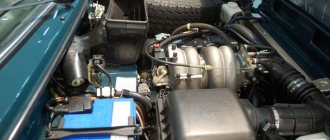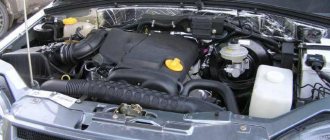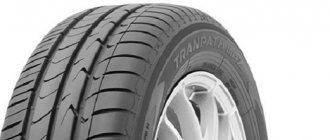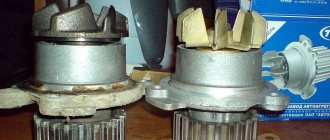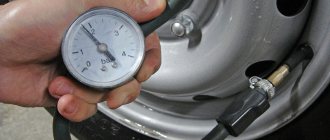The five-door Lada Niva 4x4 is a compact, unpretentious, reliable SUV designed for transporting passengers and luggage at air temperatures from -40 °C to +45 °C. This car is distinguished by a suspension that provides excellent ride comfort and absolute immunity to road irregularities. The five-door VAZ 2131 is the most spacious car in the Niva 4x4 line.
Dimensions, weight, load capacity
The vehicle has characteristics such as length, width, height. These indicators help the driver assess how much space the car occupies on the road. Length is the distance between the maximum protruding parts in front and behind. The width is determined by the boundaries of the side mirrors. Height is measured from the surface on which the vehicle is located to the highest point on the roof of the vehicle.
All this data is not difficult to find in the vehicle operating manual. Dimensions Niva 2131:
- length – 4240 mm;
- width – 1814 mm;
- height – 1640 mm.
dimensions
For Niva 2131, the outer minimum turning radius along the axis of the front wheel track is 6.45 m. Equally important indicators are weight (curb weight) and load capacity. The first is the total mass of a set of standard equipment, all necessary consumables (including engine oil, fuel, etc.), as well as the weight of the driver. Baggage and passengers are not included. The 5-door Lada Niva 4x4 weighs 1370 kg.
Payload capacity is the difference between the permissible maximum weight and the curb weight. For Lada Niva 2131, the first indicator is 1870 kg, therefore, the carrying capacity of this vehicle is 500 kg. Permitted maximum weight (PMM) is calculated as the sum of the curb weight of the car and the maximum total weight of luggage and passengers (in the amount provided for by the design).
Lada 4×4 urban 5 doors – technical specifications – lada official website
- Body
- Wheel formula / drive wheels
- Engine location
- Body type / number of doors
- Number of seats
- Length / width / height, mm
- Base, mm
- Front/rear wheel track, mm
- Ground clearance, mm
- Luggage compartment volume in passenger/cargo…
- Engine
- Engine code
- engine's type
- Supply system
- Number, arrangement of cylinders
- Working volume, cubic meters cm
- Maximum power, kW (hp) / rev. min.
- Maximum torque, Nm / rev. min.
- Recommended fuel
- Dynamic characteristics
- Maximum speed, km/h
- Acceleration time 0-100 km/h, s
- Fuel consumption
- Also interesting: To wash or not to wash the engine?
» Lada 4×4 Urban - New Niva Urban 2020 Urban cycle, l/100 km - Extra-urban cycle, l/100 km
- Combined cycle, l/100 km
- Weight
- Curb weight, kg
- Technically permissible maximum weight, kg
- Maximum trailer weight without brake system /…
- Fuel tank volume, l
- Transmission
- Transmission type
- Final drive ratio
- Suspension
- Front
- Rear
- Tires
- Dimension
Custom Options
Technical characteristics of the Niva 2131 include operational features, engine properties and fuel and speed parameters.
Basic data on the model under consideration are presented in the table:
| Index | Definition |
| Body type | all-metal, monocoque, 5-door station wagon |
| Body class | SUV |
| Layout diagram | all-wheel drive, longitudinal engine |
| Number of places, people | 5, with the rear seat backs folded – 2 |
| Trunk volume, l | 420, with seats folded – 780 |
| Transmission type | 5MT |
| Wheelbase, mm | 2700 |
| Front/rear wheel track, mm | 1440/1420 |
| Front/rear brakes | Disc/drum |
The vehicle ground clearance (clearance) with a static tire radius of 314 mm (185/75R16) is:
- to the front suspension cross member - at least 221 mm,
- to the rear axle beam – 213 mm.
Suspension:
- front – independent, on wishbones, spring, with hydraulic telescopic shock absorbers and anti-roll bar;
- rear - dependent, lever, spring, with hydraulic telescopic shock absorbers.
For a 4x4 vehicle, the wheels account for 100% of the weight. That is why an all-wheel drive vehicle has a traction force that is approximately 2 times greater than a vehicle with a 4x2 wheel arrangement. Thanks to the front wheels installed at certain angles relative to the body parts and suspension, this car has good stability and controllability. A special feature of the 2131 model is that it prohibits towing a trailer. The motor parameters have the following characteristics:
- Type of power unit - 4-cylinder, in-line, 4-stroke.
- Engine displacement, l – 1.69.
- Power, l. With. – 83.
- Cylinder diameter and piston stroke, mm – 82x80.
- Compression ratio – 9.3.
- Power/ignition system – distributed fuel injection.
According to the operating manual, the maximum engine oil consumption is 0.7 liters per 1000 km. This value indicates wear of engine parts and the need for repairs.
Fuel and speed characteristics of the Lada Niva 2131:
- Filling volume of the fuel tank, l – 65.
- Fuel type – gasoline (AI-95).
- Maximum speed, km/h – 137.
- Acceleration time to 100 km/h, sec. – 19.0.
Fuel consumption:
- with a combined cycle, l/100 km – 11.2;
- in city driving – l/100 km – 12.1;
- in suburban driving – l/100 km – 8.3.
In terms of technical characteristics, the Lada Niva 2131 is not inferior to its more expensive analogues.
Basic car configurations
The factory supplies 3 main modifications of the car.
They have indexes 1.7, 1.7i and 1.8. All models have the same appearance, are equipped with a five-speed gearbox, and by the designations you can understand what type of engine is installed on the car. Niva 2131 1.7 is equipped with a 4-cylinder engine with a displacement of 1.69 liters, which develops a maximum power of 79 horsepower. The engine is carburetor, with cylinders with a diameter of 83 millimeters, which provide a compression ratio of 9.3. For cars, it is recommended to use AI-92 gasoline. This engine allows you to accelerate to 100 kilometers per hour in 25 seconds. The maximum speed is no more than 135 km/h.
The VAZ 2131 1.7i variety is distinguished by the fact that it has an engine with a modified fuel injection system. An injector is installed on it, which ensures uniform enrichment of the fuel mixture and its faster entry into the cylinder. For normal operation, it is recommended to use AI-95 fuel.
Niva 2131 1.8 differs from previous versions in that it is equipped with an engine with a volume increased to 1.77 liters, which allows it to develop the greatest power and speed. The piston stroke increased to 85 millimeters and a large combustion chamber made it possible to reduce the compression ratio to 8.4. The changes made it possible to achieve an increase in power to 82 hp.
At the same time, the maximum torque increased to 139/3200 rpm. But this engine is an aspirated carburetor. The outdated fuel supply system allows the use of AI-92 gasoline. The maximum speed developed by this engine is 137 km/h. The time required to accelerate to hundreds is 22 seconds.
Despite all the differences in the engines, they have the same fuel consumption. In the urban cycle it reaches 12.2 liters per 100 kilometers. This is quite a large figure, so a tank with a volume of 65 liters is installed on the car.
Car exterior
Since the start of production of the car, its appearance has remained virtually unchanged. In modern vehicle design, a square body shape, round headlights, and laconic bumpers are a classic option. This model has rear doors on the left and right sides. This makes it easier for passengers to board and disembark. The increased wheelbase increased the smoothness of the ride and reduced swaying around the horizontal transverse axis.
Short body overhangs, as well as non-protruding bumpers, provide the famous geometric cross-country ability of this car. The minimum number of plastic elements reduces the risk of damage, and the ground clearance ensures good cross-country ability in mountainous areas. Additional exterior elements will help ensure the comfort, functionality and safety of the model.
Weight and dimensions.
Niva 2131 is a restyling of the 2121 model. Mainly the car body has undergone changes. It became five-door to provide more comfortable entry for passengers. At the same time, the useful volume of the trunk has increased. All this led to a change in dimensions. The length of the car increased to 4240 mm, while the width remained the same - 1680 mm. Because of this, the wheelbase had to be increased. It is now wider than the width of the car to ensure stability when cornering.
Niva 2131 is all-wheel drive and was created specifically for off-road driving. Therefore, the ground clearance has been increased to 228 mm. This is necessary to overcome bumps and unevenness.
The Niva's trunk volume is now 420 liters with the seats folded down. The maximum useful volume is 780 liters. The total weight of the car is 1350 kilograms. In this case, the car can additionally transport up to 500 kg of cargo.
Also interesting: Engine VAZ 21213 Niva
Interior of Niva 2131
The interior of the car is simple but functional. The instrument panel with analog scales and tachometer is quite informative and easy to read due to large digitization. The climate system unit, light control keys and rear window heating are located on the center console. These elements are organized compactly, and there are no problems with their use.
The main advantage of the Lada Niva 2131 4x4 is its spacious interior. The front seats do not have a profile, but optimal rigidity and the presence of lateral support bolsters provide sufficient comfort. The cars are equipped with original convertible rear seats, which allow, if necessary, to increase the luggage compartment area.
The flat floor and wide opening facilitate the transportation of large cargo. The spare wheel is located under the hood, which allows for maximum usable space. The modernization of this car has led to the introduction of air conditioning and electric windows in luxury trim levels.
Niva trunk
The trunk of the five-door Niva with a volume of 420 liters is quite decent.
With the rear seats folded down, a large cargo area is created. True, the rear sofa is continuous. The trunk of the five-door Niva with a volume of 420 liters is quite decent. With the rear seats folded down, a large cargo area is created. True, the rear sofa is continuous.
There are differences on the go, but not for the better. The only thing in which the long Niva is superior to the regular one is straight-line stability. The long wheelbase of the VAZ-2131 did its job. The car holds a straight line well. The five-door also has a fuel tank increased to 65 liters (instead of 42 liters for the regular Niva). So the eternal problem of the three-door, the modest power reserve, has disappeared.
Let's sum it up
So, we looked at what the all-wheel drive five-door Niva is. Among the positive aspects of the car it is worth emphasizing:
- Simplicity of design (accordingly, it can be repaired in most cases without the help of mechanics).
- Patency. Already in the basic configuration there is a locking and reduction gear.
- Spacious interior (compared to the short-wheelbase version).
- Soft suspension.
But this car also has disadvantages. Among them it is necessary to highlight:
- Weak motors.
- High fuel consumption.
- Body prone to corrosion.
- Poor sound insulation.
- Poor directional stability.
Who is this car suitable for? Niva is a good choice for those who need a simple and cheap all-wheel drive SUV for off-pavement driving. It is for such purposes that in most cases it is purchased. There is no point in buying a car and using it purely in the city. In summer it is hot, it is clumsy, and it eats a lot of fuel.
Read news about the new Niva
- Instructions for winding up the mileage of NIVA 4x4 URBAN with ABS
- The best automatic transmissions and engines for UAZ 469/3151, characteristics, gasoline, diesel internal combustion engines
- Fuses and relays Lada 2121
- Lada Niva 2021 new body | Lada Niva Chevrolet prices and equipment 2021 from an official dealer.
- Niva Chevrolet and Niva 2121: the main differences between owning these cars
- Which is better Niva or Niva Chevrolet
- How to remove the crankshaft pulley of a VAZ 2114 yourself: instructions, photos and videos - Automaster
- Niva tuning: 145 photos of ideas on how to improve the VAZ 2121 with your own hands
